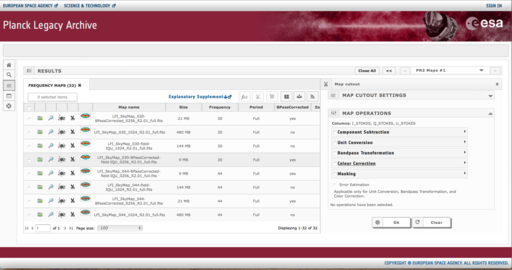
The Planck Legacy Archive
Added-Value Tools
A number of integrated
tools facilitate the processing of Planck products.
The annual European Week of
Astronomy and Space Science is taking place next month
from 3rd to 6th April 2018 in Liverpool, UK. Various ESDC
members are attending the conference and will be at the ESA
booth, along with other ESA colleagues.
The conference this year is a joint annual meeting of the
European Astronomical Society and the National Astronomy
Meeting of the Royal Astronomical Society. ESDC will be giving
a presentation and demo of ESASky at the symposium 'Software
in astronomy'. We will also be showing our astronomy archives
at the ESA booth, including the European Hubble Space
Telescope archive, the Gaia Archive, the Herschel Science
Archive, the Planck Legacy Archive, the XMM-Newton Science
Archive and ESASky. Come and visit us at the booth and ask for
a demo!
 Image: EWASS2018
Image: EWASS2018

A number of integrated
tools facilitate the processing of Planck products.
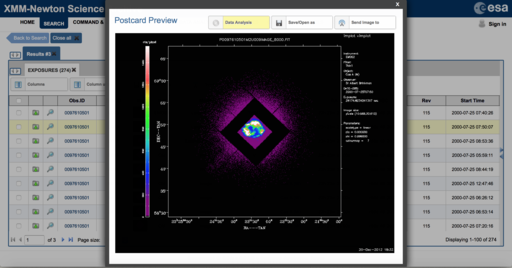
The XSA provides a flexible search
interface and a wealth of selection, visualisation and
downloading functionalities.
Full story
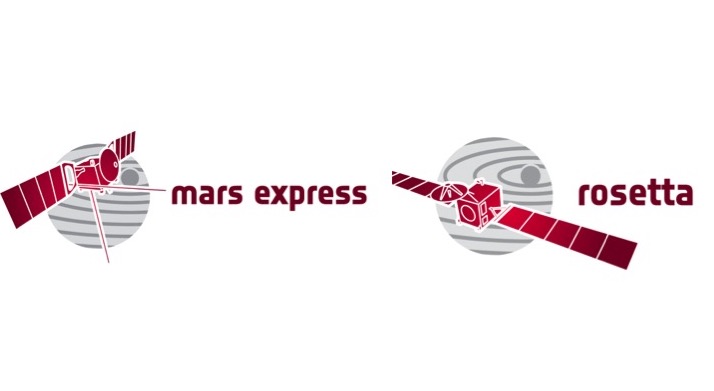
New Rosetta and Mars Express data
products were recently made available through the PSA.
Full story
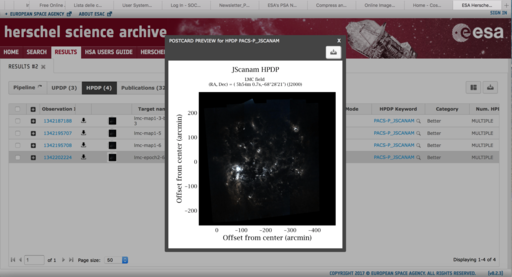
Highly Processed Data Products (HPDPs)
are expert-provided data products that have been
improved by further processing.
Full story
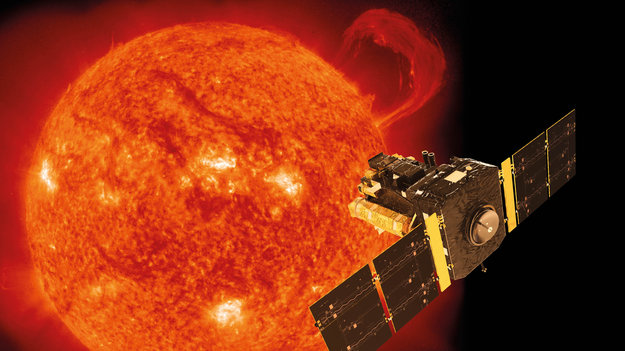
On 22 December 2017, the Solar and
Heliospheric Observatory (SOHO) reached 22 years in
space.
Full story

ESASky has an Observation Planning
functionality that can be used to prepare JWST
proposals.
Full story

In a recent release of the Planck Legacy Archive
(PLA) a number of "Added-value tools" have been
integrated to facilitate the processing of Planck products,
alone or in combination with external datasets. These tools
are mainly designed to help users who are not familiar with
some of the particularities of CMB data, but should also be of
interest to CMB users.
The new tools can be categorized into four distinct groups:
map operations on restricted map-sets, including component
subtraction, unit conversion, colour correction, bandpass
transformation, and masking of map-cutouts or full-sky maps; a
limited version of component separation, map-making using two
different types of time-ordered data; effective beam
averaging; and noise map cutout.
Some of these tools produce real-time results, while the
results of more complex tasks that require more computing time
are sent via email to the users and require registering and
logging into the PLA.
The tools can be found in the PLA website. For more
information, refer to the dedicated
documentation.

The XMM-Newton Science
Archive (XSA) offers access to all semi-raw (ODF) and
pipeline processed (PPS) data, as well as to all derived EPIC
and OM source catalogues. For expert users there is a
possibility to directly query the XSA database via TAP (table
access protocol), but to cover the needs of most users there
is a very flexible search interface that allows to search data
of individual objects or lists of objects, providing a wealth
of selection, visualisation and downloading functionalities.
The interface also provides options to broadcast the results
of the search to Virtual Observatory (VO) tools. Moreover,
there are now direct links to ESAsky for each observation
allowing a fast identification of the X-ray sources, and the
exploration of their data in other wavelengths.
Image: ESA/ESDC

New datasets from the Mars Express and Rosetta missions were recently released and made available through the Planetary Science Archive (PSA):
Image: ESA

Herschel
Highly Processed Data Products (HPDPs) are
expert-provided data products. While standard archive data
products have been processed using automatic pipelines, HPDPs
have been further processed by mission experts using
interactive analysis tools and/or user-contributed software.
HPDPs can be either data products that the pipelines do not
produce at all, or (for certain observations) improved
products with respect to the pipeline products.
Recently, new HPDP datasets have been released and made
available through the HSA. These new products are PACS JScanam mosaics
(improved quality mosaics of very extended regions like the
Milky Way, the Orion star-forming region or the Magellanic
Clouds) and Unimap
mosaics (created from observations acquired in parallel
mode and processed only up to Level 2 by the standard pipeline
for a variety of reasons); SPIRE
HIRes maps (high signal-to-noise maps deconvolved using
an improved algorithm and calibrated for extended emission);
and HIFI
Expert Reduced Spectral Scans (Level 2.5 products
baseline-corrected for residual artefacts).
A description of all HPDPs, those available in the HSA and in
addition those not yet available in HSA, can be found in the Herschel
documentation pages.
Image: ESA/ESDC
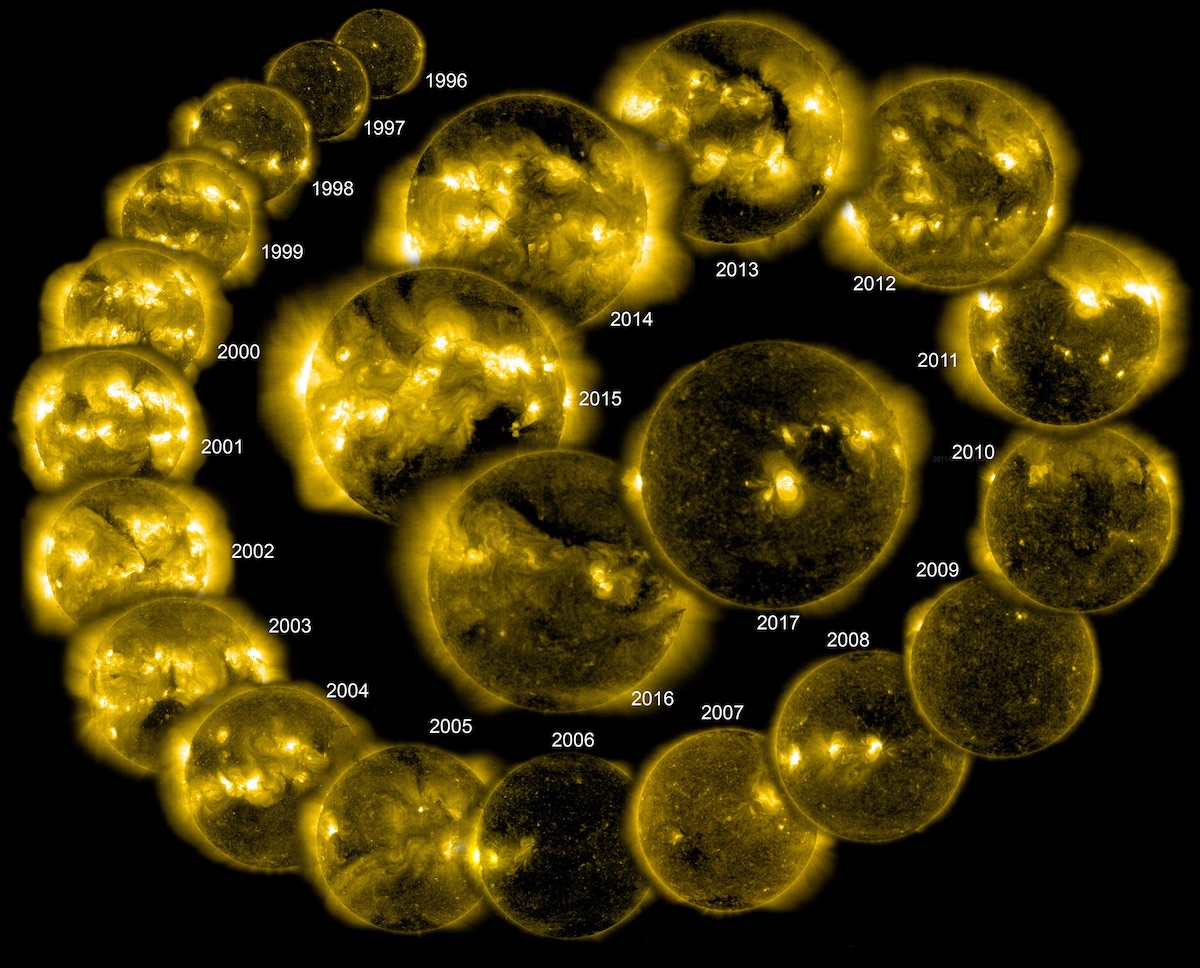
On 22 December 2017,
SOHO,
the ESA/NASA Solar and Heliospheric Observatory, celebrated 22 years of successful scientific operations in space. 22 years correspond to two solar sunspot cycles, which have been found to be widely different. The sunspot cycle happens because of the flip of the Sun’s magnetic poles — north becomes south and south becomes north—, which happens approximately every 11 years. Some 11 years later, the poles reverse again back to where they started, making the full solar cycle actually a 22-year phenomenon.
Initially
planned to operate for 2 years, SOHO is now the
longest-lived heliophysics mission in operations. It indeed continues to operate unique scientific instrumentation such as white light coronographs that are highly complimentary to measurements performed by other solar observatories such as SDO, HINODE, IRIS or PROBA-2. The SOHO data are still widely used by the scientific community, leading to the publication of more than 200 peer-reviewed papers based on these data in 2017.
SOHO data can
be retrieved from the SOHO
Science Archive at the ESDC.
Image: NASA/ESA
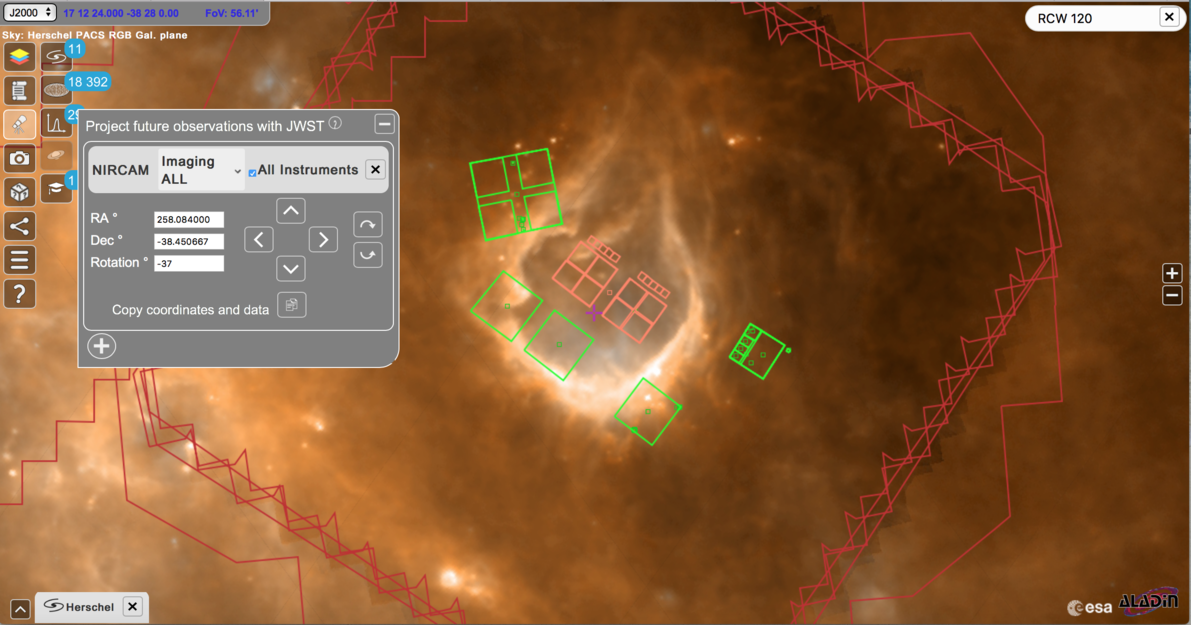
If you are preparing
a proposal for the JWST (deadline: April 6th), you can
use ESASky to define your
pointings with the Observation Planning tool. This
functionality makes it possible to display the footprints of
any JWST instrument, or of the whole focal plane, at any
chosen position and orientation. This way, users can check the
overlapping of their planned observations with observations
from other missions available in ESASky, and make sure that
their pointings cover or avoid particular features or objects
visible in the ESASky all-sky maps.
It is important to note that the ESASky Observation Planning
tool is not intended to replace the JWST APT tool,
but just to provide a quick-look aid for proposal preparation.
The coordinates and positional angles of the pointings defined
using this functionality have to be checked and refined in the
APT, which is the official tool for preparing JWST
observations.
This
video shows the Observation Planning tool in action. For
more information, refer to the ESASky
documentation.
Image: ESA/ESDC